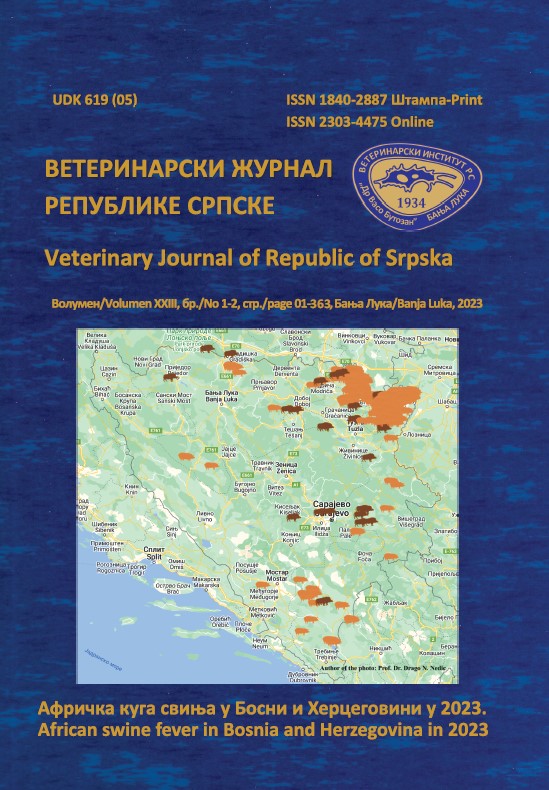MICROBIOLOGICAL PURITY IN FOOD CHAIN
DOI:
https://doi.org/10.7251/VETJEN2301143GAbstract
In addition to microbiological criteria for food (food safety criteria and hygiene criteria in the production process), microbiological purity criteria are a very important link in the microbiology of the food chain. Swab samples of equipment, devices, accessories, work surfaces, work clothes and hands of workers engaged in production, processing and traffic in facilities and vehicles that come into contact with food, and where there is a risk of the appearance and spread of an infectious disease, were used for testing. The examined samples originated from facilities for the production, processing and distribution of food, restaurants and other catering facilities where food is served, educational and social protection facilities (accommodation facilities) and vehicles that come into contact with food. The study was carried out during year 2020 and included 2,958 samples. Laboratory analysis of swab samples was performed using BAS EN ISO 4833-1:2014, BAS EN ISO 21528-2:2018, BAS EN ISO 11290-1:2018 and BAS EN ISO 6579-1:2018 methods. The aim of the study is to assess the microbiological purity in the food chain. Of the total number of analyzed swab samples, 94.22% were satisfactory, and 5.78% were unsatisfactory. Observed in relation to the total number of analyzed samples, 77.19% of the samples were unsatisfactory due to the increased number of aerobic microorganisms at 30°C, and 22.81% due to the increased number of Enterobacteriaceae. Pathogens Salmonella spp. and Listeria monocytogenes were not isolated in any swab sample. The obtained results indicate that the general level of hygiene in the production and distribution of food is at a high level, especially due to the absence of pathogens Salmonella spp. and Listeria monocytogenes, but that there is still a risk of contamination by Enterobacteriaceae, which are indicators of the hygiene of the production process.

